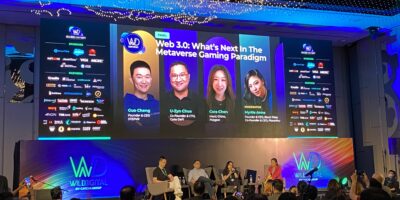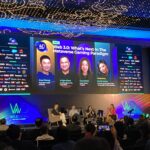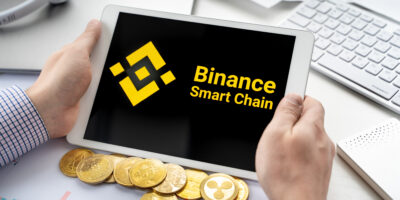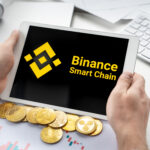
How Web3 technology is transforming business and personal interactions. (Source – Shutterstock)
What’s new in Web3 technology and the market?
- Web3 technology is redefining the internet by transitioning from a centralized to a decentralized architecture.
- Tencent Cloud’s Blockchain RPC and GameBridge offer robust tools and platforms for developers.
- Web3 technology is shaping today’s world as well as giving a pathway to the future.
When Web3 initially captured the tech community’s attention, it quickly became evident that it was more than just a fleeting trend. Featuring advancements like blockchain, metaverse technologies, and NFTs, Web3 promises to redefine the very fabric of the internet.
Web3 is steering us from a centralized architecture toward a more democratic, decentralized model. This fundamental shift is challenging the hegemony of established internet players. The key technologies fueling Web3 include:
- Blockchain: beyond cryptocurrency, it provides secure, transparent systems.
- Peer-to-Peer Payments: with the goal of eliminating middlemen.
- Non-Fungible Tokens (NFTs): unique digital assets that redefine ownership.
- Distributed Autonomous Organizations (DAOs): entities run by communities, underpinned by transparent voting systems.
Although still in its early stages, Web3 is ripe with innovation and potential. Its guiding principles, such as decentralization and shared value, have implications far beyond its current applications. The real hurdle is taking these principles into the mainstream.
Caveats: Be wary of scams and risks in the Web3 space
While the blockchain ecosystem offers enormous potential, it is also rife with fraudulent Ponzi and pyramid schemes that lack real-world value. These deceptive practices exist solely to lure unsuspecting individuals into investing or participating in profit-driven pyramid structures.
A recent study by blockchain analytics company TRM Labs revealed that in 2022 alone, people globally poured US$7.8 billion into such crypto-based pyramid and Ponzi schemes. Moreover, the report stated that an additional US$1.5 billion in cryptocurrency was suspected of being used for illegal activities on darknets, and another US$3.7 billion was lost to hacks and other security breaches.
Cumulatively, TRM Labs indicated, an alarming US$9.04 billion in cryptocurrency was channeled into various forms of financial fraud schemes last year.
Even though these fraudulent activities have been exposed numerous times, a significant number of users continue to fall prey to them. These schemes frequently capitalize on social media hype, masquerading as the next big thing in the crypto space, like Bitcoin or Ethereum, and offer tantalizing high returns. Clearly, as we navigate the promising but complex world of Web3 technology, caution and due diligence are imperative.
So, is Web3 the internet’s next evolutionary phase or just a buzzword? Only time will tell, but the groundwork for transformative change is undoubtedly being laid.
How partnerships are molding Web3 technology
If you’ve been following tech updates, you’ve likely seen significant initiatives and partnerships shaping the Web3 ecosystem. Far from being merely theoretical, Web3 is transitioning into a space of practical applications and pivotal alliances. Examples range from Tencent Cloud’s debut product to innovative platforms like GameBridge for game developers.
Tencent Cloud has introduced its first Web3-centric service, Tencent Cloud Blockchain RPC, in collaboration with blockchain service provider Ankr. Designed to equip Web3 developers with robust tools and infrastructure, this service aims to keep developers ahead in the ever-changing Web3 arena.
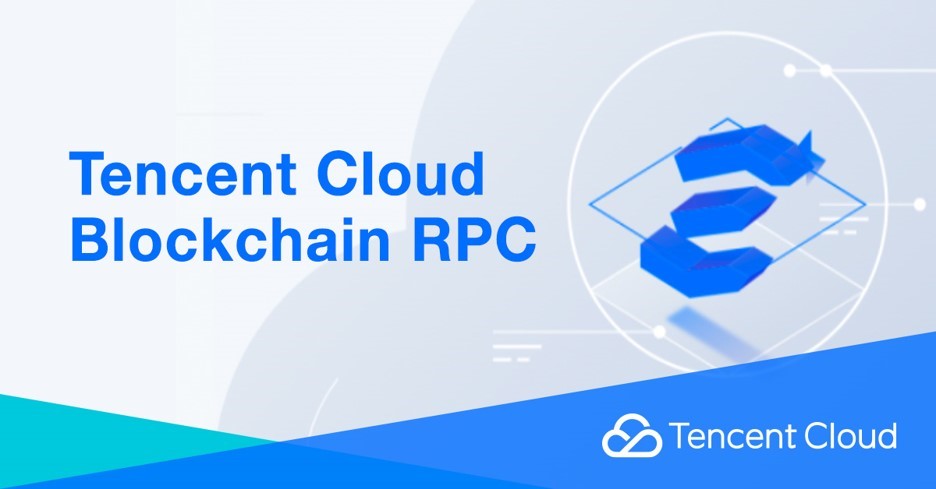
Tencent Cloud Blockchain RPC delivers reliable Web3 infrastructure. (Source – Tencent)
Developed alongside Ankr, this newly-launched RPC service allows developers to tap into and transact across multiple blockchains while ensuring the stability of its underlying node structure. Tencent Cloud Blockchain RPC enables low-latency engagement with blockchain networks, freeing developers to focus on creating decentralized apps.
This service simplifies blockchain transactions and helps businesses overcome the operational challenges and costs of running their own nodes. These can range from high operating costs to the constant need for maintenance and updates.
In addition, it mitigates potential disruptions from hardware failures, network issues, and security threats, ensuring more reliable application performance. And it also solves scalability issues, which standalone nodes often find challenging during high-traffic periods.
What Tencent Cloud Blockchain RPC offers
There will be two versions of the service. One is a public model with certain limitations, while the other is a premium Pay-As-You-Go version offering higher throughput. Plans for an enterprise-specific iteration with broader blockchain and regional coverage are also in the works. Future updates will incorporate additional supported blockchains and an advanced API service for both versions.
Tencent Cloud’s new service delivers high-concurrency performance, supporting up to 1,800 requests per second for each blockchain, a feat achieved through Ankr’s specialized node expertise. Leveraging a decade of cloud service experience, Tencent Cloud ensures high resilience, constant availability, and minimal latency.
GameBridge: Pioneering Web3 technology in gaming
In the rapidly growing Asia-Pacific gaming market, which is now worth over US$72 billion, incorporating blockchain technology has become essential for staying competitive. Yet conventional game developers encounter challenges; adding Web3 features to their current processes often proves to be costly, manpower-heavy, and disruptive, hindering the sector’s capacity for quick innovation and adaptation.
NEON, the studio behind the eagerly-awaited AAA first-person shooter Shrapnel, has revealed GameBridge, a next-generation Web3 game developer platform.
Springing from the rigorous development of Shrapnel, GameBridge provides a streamlined path for game creators to include state-of-the-art content creation tools in their projects, as well as offering players an unparalleled degree of ownership over in-game assets.
The platform provides a wide array of services, from digital wallets to commerce solutions, all compatible with various blockchain networks and third-party services. Developers can speed up their timelines by a remarkable 75% and cut costs by up to 90% by using GameBridge as opposed to building similar features from scratch.
GameBridge acts as a comprehensive toolkit for game developers looking to incorporate Web3 functionalities. Its APIs and SDKs integrate effortlessly with key game engines like Web, Unreal Engine, and Unity, enabling access to a host of advanced features without affecting current workflows.
Featured in Shrapnel, GameBridge introduces a new level of asset ownership for players. Its capabilities allow gamers to buy, trade, and exploit their in-game assets across multiple platforms, unlocking unprecedented value and creative freedom.
Key GameBridge features:
- Introduces 18 revolutionary functionalities, including composable NFTs and advanced skill trees.
- Enables developers to populate their virtual worlds with player-owned assets, increasing engagement and retention.
- Offers seamless asset transfer across various gaming platforms, enhanced by game-specific metadata features.
- Creates a dynamic ecosystem for developers and gamers, complete with scheduled NFT-based rewards and marketplace features, all in compliance with KYC and AML guidelines.
Ed Chang, head of gaming at Ava Labs, views GameBridge as a game-changing resource that simplifies the incorporation of blockchain and NFTs for mainstream developers. According to Chang, NEON has effectively tackled complex technical hurdles, enabling more effective development with fewer resources.

Simplifying the incorporation of blockchain and NFTs for mainstream developers. (Source – Shutterstock)
Ivan Soto-Wright, Co-Founder and CEO of MoonPay, is excited to extend Web3 features to a new gamer and developer audience. MoonPay’s integration with GameBridge allows players to purchase NFTs through traditional payment methods, enhancing the in-game experience for a broader user base.
As we move further into an era marked by digital ownership, decentralized governance, and cross-platform utility, these developments make it clear that Web3 technology isn’t just a promise for the future—it’s actively shaping the present.
READ MORE
- 3 Steps to Successfully Automate Copilot for Microsoft 365 Implementation
- Trustworthy AI – the Promise of Enterprise-Friendly Generative Machine Learning with Dell and NVIDIA
- Strategies for Democratizing GenAI
- The criticality of endpoint management in cybersecurity and operations
- Ethical AI: The renewed importance of safeguarding data and customer privacy in Generative AI applications

